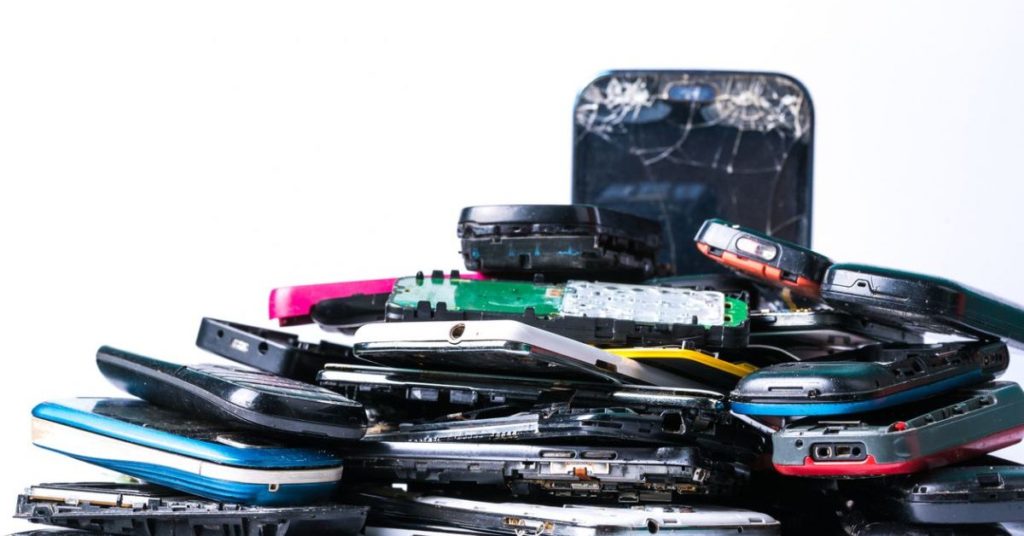UC San Diego Computer Scientists Tackle Annual Waste of 1.5 Billion Junked Smartphones

From a pristinely packaged device on a box-store shelf to a beat-up and abandoned phone stripped of its SIM card, a smartphone’s journey from indispensable to deactivated is remarkably brief.
In a paper presented at the 2023 Architectural Support for Programming Languages and Operating Systems, computer scientists from the University of California San Diego Jacobs School of Engineering say that most smartphones are decommissioned 2.5 years after purchase. That’s the average length of time consumers keep their phones before depleted battery life, a broken screen, obsolete software or the release of a new model motivates them to shop for a replacement.
With 1.5 billion smart phones sold annually, it’s estimated that nearly as many are deactivated within that same time frame. The end-of-the-line for many of these outmoded smartphones is a junk drawer or a storage box in the garage.

This truncated lifespan begs the question: can smartphones be given a second life? If so, a second and more perplexing question must be considered, too: how can smartphones be repurposed without doing more environmental harm than good?
These are the issues researchers from UC San Diego’s Department of Computer Science and Engineering (CSE) are tackling. PhD student and first author Jennifer Switzer, along with her coauthors CSE professors Ryan Kastner and Pat Pannuto and PhD student Gabriel Marcano, has proposed a promising strategy to target smartphone waste in the paper Junkyard Computing: Repurposing Discarded Smartphones to Minimize Carbon.
“It takes a spectacular amount of energy to manufacture modern, high-performance computer technology. The paper explores how to make computing more sustainable by finding new uses for devices society has already paid the carbon cost to manufacture,” said Pannuto.
The High Carbon Cost of Recycling Phones
For many years, the Environmental Protection Agency (EPA) has encouraged consumers to recycle their deactivated smartphones. Their data suggests that for every million smartphones recycled, more than 35 thousand pounds of copper can be recovered along with smaller amounts of silver, gold and palladium. These and other raw materials can be used to produce new consumer goods such as automotive parts, jewelry, garden furniture and batteries.
The challenge is that one pocket-sized smartphone has already left a sizable carbon footprint. Recycling the phone leaves another. The process involves extracting raw materials from the phone, manufacturing new products and transporting them to consumers. Collectively, these steps burn fossil fuels and run the risk of harming air and water quality as well as sensitive ecosystems.
In contrast to the EPA’s e-waste recycling plan, Switzer and her co-authors hope to resurrect billions of discarded smartphones and redeploy them as working processors. Their approach avoids a carbon intensive manufacturing process while conceivably harnessing the unspent 75% of a smartphone processor’s lifespan.

Switzer’s innovative study considers the practicality and environmental benefits of reusing processors (even from decade-old devices) for non-consumer applications, specifically as cloudlets for microservices for social media websites and as wildlife monitoring sensors. It also explores how to combine phones to perform increasingly complex tasks.
Along with these technical considerations, the paper addresses how to make computing more sustainable, offering a metric, Computational Carbon Intensity (CCI), to enable quantified comparison of the true lifetime impact of computing. The research suggests that junkyard computers can grow global computing capacity while simultaneously supplanting the manufacture of new devices.
The team applied CCI to old servers, laptops and smartphones and found that smartphones offer the best potential for carbon impact. Not only are there a remarkably large number of discarded phones available, but they come with a wide array of valuable components, including a robust power supply, networking hardware and, of course, powerful processors with plenty of utility remaining.
“For devices with shorter lifespans, such as smartphones, 80% or more of the lifetime carbon footprint comes from the energy expended to make the device, not the energy it used while it ran,” said Pannuto. “How many old phones, laptops, and desktops are gathering dust? Let’s see if we can find a useful second life for them!”
Earlier this year, Switzer and her co-authors earned a Distinguished Paper Award at the 2023 Architectural Support for Programming Languages and Operating Systems (ASPLOS) conference, the premier forum for interdisciplinary systems research. Since then, their paper has had over 50,000 downloads, a record in the conference’s 28-year history.
(PhD Students Jennifer Switzer, Gabriel Marcano, and CSE professor Pat Pannuto are also researchers in the Center for Networked Systems.)
By:
Kimberley Clementi – kclementi@ucsd.edu
Katie E. Ismael – kismael@eng.ucsd.edu
Media Contact:
Katie E. Ismael – kismael@eng.ucsd.edu
Also Featured on KPBS News: https://www.kpbs.org/news/science-technology/2023/08/25/new-smartphone-recycling-plan-its-all-about-the-processor
